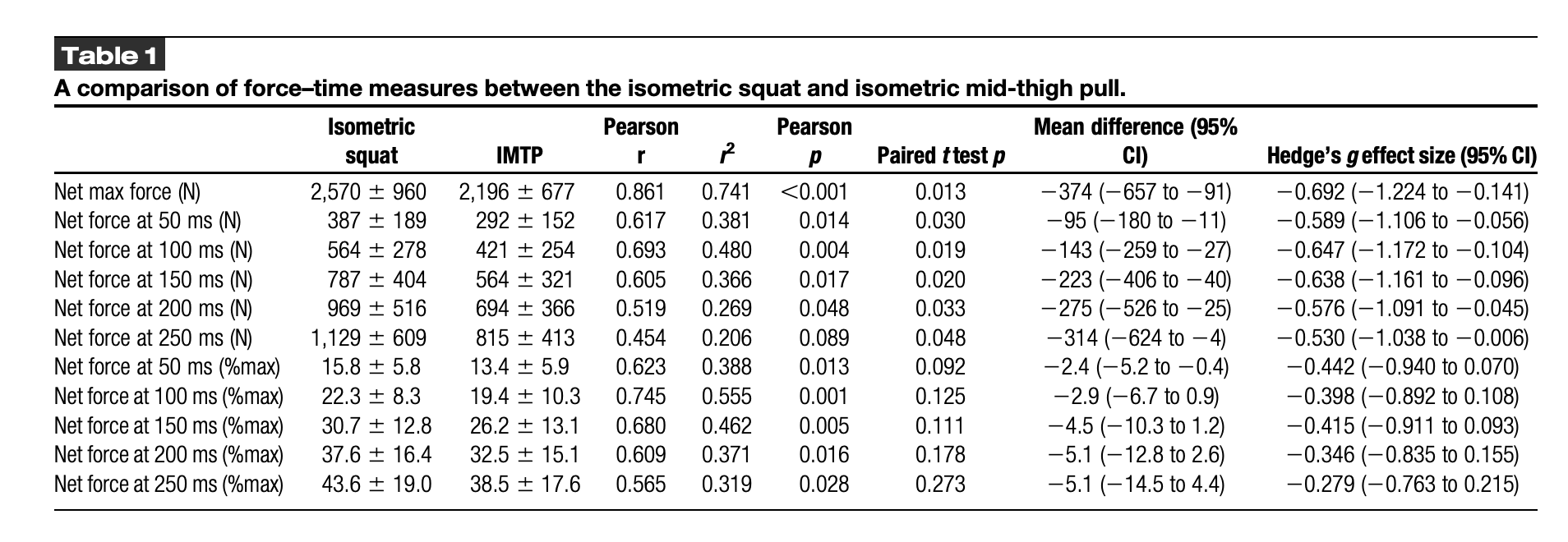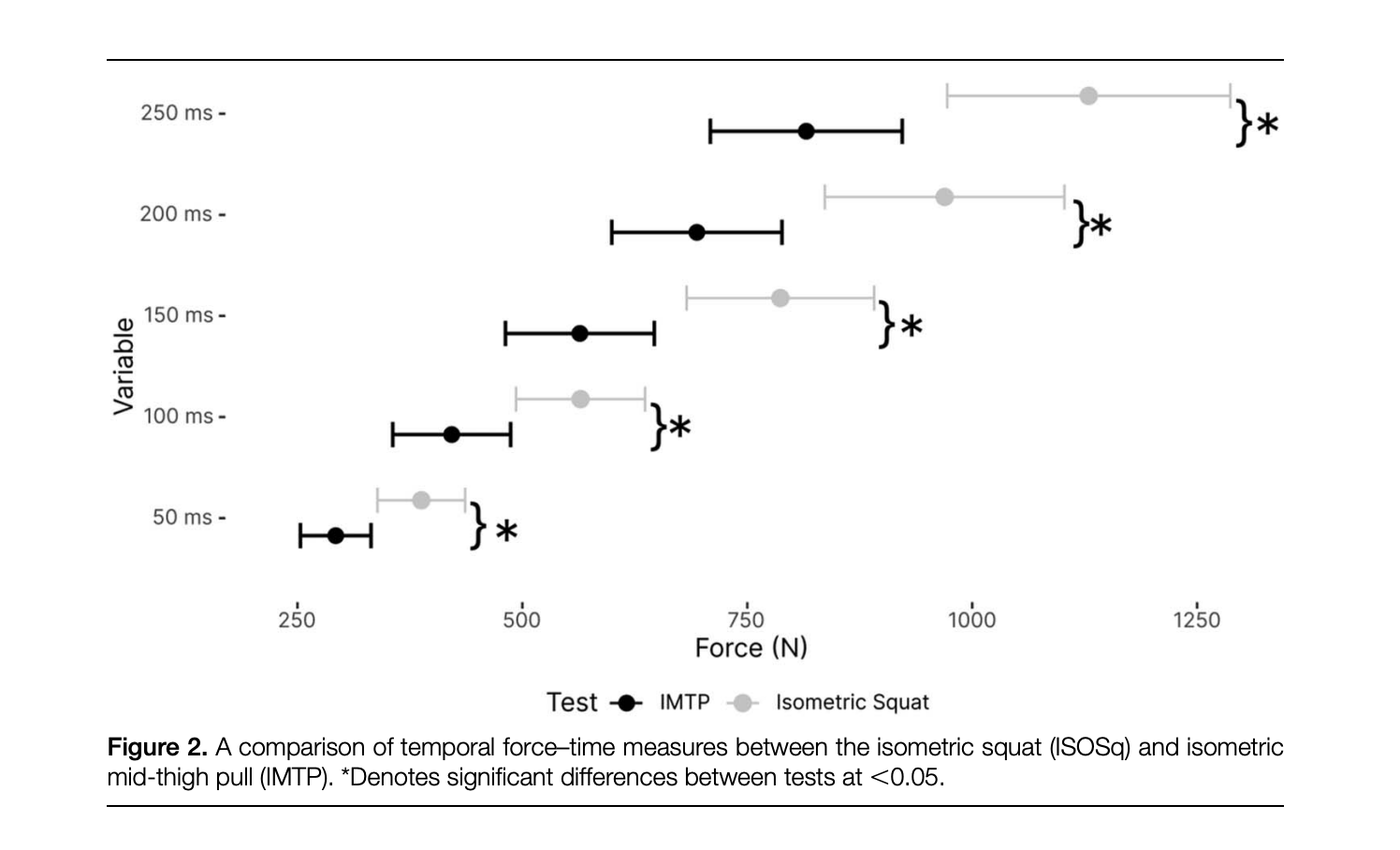Maximal strength assessments are critical in sport performance monitoring and program design.
Isometric tests like the Isometric Squat (ISQ) and Isometric Mid-Thigh Pull (IMTP) are commonly used, but it’s unclear how interchangeable they are.
This study compared force-time characteristics and muscle activation between ISQ (performed with the bar on back) and IMTP to inform better test selection for coaches and practitioners.
Do the ISQ and IMTP measure the same strength qualities, and are results between them interchangeable?
What Did the Researchers Do?
Researchers conducted a cross-sectional study with 15 recreationally trained participants (12 males, 3 females; ~25 years old, ≥2 years resistance training experience).
Protocol
- Performed max effort ISQ and IMTP on a force plate system.
- Muscle activation recorded via EMG from vastus medialis (VM), vastus lateralis (VL), biceps femoris (BF), and latissimus dorsi (LD).
- Key measures: Peak force and force at 50, 100, 150, 200, 250 ms; concurrent EMG.

What Were the Results?
Peak force
- Very strong correlation (r = 0.86; 74% shared variance) between ISQ and IMTP.
- ISQ showed slightly higher peak force overall.
Early force-time measures (explosive strength)
- Moderate shared variance (27–48%).
- ISQ produced greater forces at early time points (50–250 ms).

Muscle activation (EMG)
- Higher BF activation in IMTP across all timepoints.
- No significant differences in VM, VL, or LD activation.
- Relationships between muscle activation varied by muscle and timepoint.

What Does This Mean?
- Peak force in both tests reflects the same general strength capacity, so coaches can use either for assessing maximal strength.
- Explosive force production differs between tests, suggesting task-specificity even between these seemingly similar positions.
- Hamstring involvement is higher in IMTP, making it preferable when posterior chain assessment is of interest.
Limitations
- Cross-sectional design so can’t infer how changes over time compare.
- EMG not normalized; reported in raw units but compared within-subjects.
Coach's Takeaway
- Peak force ⮕ Either test is fine as they reflect similar max strength qualities.
- Explosive force ⮕ Not interchangeable; choose the test based on specific demands of your sport or athlete.
- Need hamstring emphasis ⮕ Choose IMTP, although I would suggest a hamstring specific test is you want to measure posterior chain specific strength.
I hope this helps,
Ramsey
Reference
James LP, Davids CJ, Rodriguez-Anderson T, Suppiah HT, Mentiplay BF. (2025). A comparison of force–time and muscle activation characteristics between the isometric squat and isometric mid-thigh pull. J Strength Cond Res.




